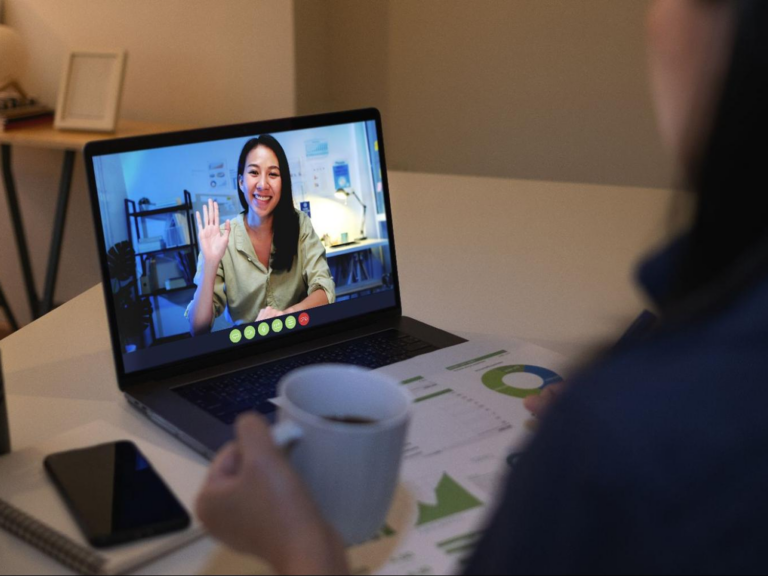There are numerous options for organizing a workspace. These can be traditional offices with fixed workstations and set schedules, or remote work that allows you to work from anywhere in the world. Hybrid models, collaborative and competitive work environments, and, unfortunately, even toxic conditions — each of these options has its own unique features.
In the table below, we have compiled 10 different types of work environments and highlighted their pros and cons. Ultimately, this information will serve as a valuable tool:
- For managers — to choose a model that best aligns with the company's strategy, optimize processes, and adjust the infrastructure to achieve business goals.
- For HR professionals — to identify the strengths and weaknesses of the current organizational culture and develop recommendations for improving working conditions and boosting employee satisfaction.
- For regular employees — to understand how different work environments impact their daily activities and select the ideal format for personal productivity and maintaining a work-life balance.
Thus, the table will help every participant in the business process make more informed decisions and get closer to their own goals.
| Type of Work Environment | Key Characteristics | Pros | Cons |
| Interaction with the office | |||
| Traditional Office | Fixed physical workspaces, set schedules, hierarchical structure | Clear structure, in-person collaboration | Limited flexibility, rigid routines |
| Remote Work | Work from anywhere, digital collaboration tools | Flexibility, no commute | Potential isolation, heavy reliance on tech |
| Hybrid Work | Blend of in-office and remote work | Best of both worlds, adaptable | Coordination challenges, inconsistent communication |
| Flexible Work | Emphasis on autonomy, results-focused, flexible hours | Enhanced work life balance, personalized work style | Requires high self-discipline, blurred work-life boundaries |
| Teamwork | |||
| Collaborative Work | Open layouts, teamwork, emphasis on communication and knowledge sharing | Fosters creativity, builds strong team dynamics | Can be noisy, risk of groupthink |
| Competitive Work | Performance-driven, individual achievement prioritized | Drives high performance, rewards excellence | High pressure, potential for burnout |
| Creative Work | Innovation-centered, artistic, experimental approaches | Encourages new ideas and creative solutions | May lack structure, risk of unclear expectations |
| Conventional Work | Traditional practices, strict protocols, hierarchical | Stability, clear processes | Resistance to change, limited innovation |
| Enterprising Work | Growth-oriented, innovation-driven, risk-taking culture | Promotes entrepreneurial spirit, rapid development | High risk, can lead to instability |
| Toxic Work | Negative dynamics, poor communication, misaligned company values | N/A | Demotivating, high turnover, undermines employee well-being |
10 Types of Work Environments (With Examples)
Understanding the various workplace environments is key to enhancing the employee experience and promoting a positive work life balance. Below, we break down 10 distinct types of environments, illustrating each with concrete examples.
1. Traditional Office Work Environment
Fixed workspaces, set work schedules, and a strict hierarchy.
📝 Example
Major financial institutions like JPMorgan Chase or Bank of America, where a formal corporate culture and physical office presence are essential.
2. Remote Work Environment
Work from anywhere with extensive use of digital communication tools.
📝 Example
Companies like GitLab and Automattic, which operate on the principles of remote work with teams distributed worldwide.
3. Hybrid Work Environment
A combination of office-based and remote work, giving employees the flexibility to choose their work setting.
📝 Example
Microsoft and Google, which have adopted hybrid models that balance face-to-face collaboration with remote work flexibility.
According to Gallup research, more than 60% of employees believe that the hybrid model combines the best aspects of office and remote work: it allows them to maintain a work life balance and encourages knowledge sharing with colleagues.

4. Flexible Work Environment
Focus on autonomy, results, flexible hours, and an individualized approach to work.
📝 Example
Startups and tech companies like Atlassian offer flexible working conditions that boost productivity and employee satisfaction.
5. Collaborative Work Environment
Emphasis on teamwork, open office spaces, and active knowledge sharing.
📝 Example
Advertising agencies and creative studios such as IDEO or Wieden+Kennedy, where collaborative creativity and open idea exchange are key.
6. Competitive Work Environment
Focus on individual achievement, high performance standards, and incentive-driven success.
📝 Example
Sales departments in large corporations or investment banks like Goldman Sachs, where success is measured by individual targets and quota fulfillment.
7. Creative Work Environment
An environment that nurtures innovation, experimentation, and creative thinking.
📝 Example
Film companies and design studios like Pixar or Saatchi & Saatchi, where free expression of ideas and unconventional approaches are encouraged.
8. Conventional Work Environment
Well-established processes, traditional work methods, stability, and a structured approach.
📝 Example
Government agencies and large corporations with entrenched bureaucratic structures — organizations that adhere to traditional management methods.
9. Enterprising Work Environment
Growth-oriented, innovation-driven, and open to taking risks, characterized by a dynamic atmosphere.
📝 Example
Venture capital firms and startups like Uber or Airbnb, where bold ideas and rapid development are highly valued.
10. Toxic Work Environment (and How to Fix It)
Negative dynamics, low trust, lack of support, and distorted company values.
📝 Example
There have been instances across various industries — sometimes within divisions of large companies — where excessive pressure, poor communication, and lack of development lead to high employee turnover. Such environments require radical changes to foster a positive culture.
Signs include:
- Poor company values and unethical practices
- Unhealthy communication styles, such as gossip and passive-aggression
- Limited opportunities for growth
To fix a toxic work environment:
- Reinforce positive company values.
- Promote healthy work-life boundaries and provide channels for honest feedback.
- Invest in professional development and encourage knowledge sharing.Introduction: What is a Work Environment?
Imagine stepping into an office where every detail, from physical aspects to company values, subtly influences your mood and productivity. A workplace environment is not just about the building or desk layout — it’s a blend of tangible elements and an organizational culture that guides how you communicate, collaborate, and balance your work-life.
Consider a flexible work environment where remote options and adjustable hours empower employees. Such settings support a healthy employee experience by fostering a supportive culture and clear communication style. In this guide, we explore:
- The evolution of different types of work environments, including traditional offices and innovative flexible models.
- How organizational culture, such as shared company values and a commitment to work-life balance, shapes the workspace.
- Real-life examples illustrating how physical aspects and a positive employee experience can drive success.
✨ This comprehensive look equips you with practical insights to choose or create a workplace that truly works for you.
Elements of a Work Environment
A workplace environment shapes how employees work and feel. It includes physical aspects — like office layout — and deeper social and cultural factors that influence employee experience.
Physical Environment
A well-designed environment boosts comfort and collaboration. Think about your workspace, lighting, and layout. An open office can encourage work with a sense of belonging, while quiet zones help team members focus. Align these physical aspects with company values so employees feel valued and engaged.
Social & Cultural Factors
A positive company culture grows from organizational culture and open communication. Shared company values, trust, and knowledge sharing create a supportive culture. When employees see a culture that values respect and promotes personal and professional growth, they thrive in a positive work environment.
🚀 ResearchGate research demonstrates that strong workplace relationships significantly increase employee satisfaction and promote professional growth. When employees work in a culture of respect, they grow personally and professionally faster.
Work-Life Balance & Flexibility
Flexible work arrangements — like remote work options or hybrid work — improve work-life balance and suit many types of work environments. Offering a flexible work environment signals respect for personal commitments and enhances loyalty. This approach fosters a company culture where employees work effectively and feel supported in all areas of life.
How to Choose the Right Work Environment for Your Needs
Choosing a positive work environment is critical to long-term satisfaction. Both employees and employers have roles in creating and finding an ideal fit. Below are tailored approaches for each perspective.

Employee Perspective: Self-Assessment Checklist
Before committing to a job, evaluate if the environment supports your personal and professional growth. Consider these points:
✔️ Work Style
- Do you excel in independent tasks or thrive in team settings?
- Is a structured schedule or flexible arrangement more suitable for you?
✔️ Company Culture
- Do the organization’s values resonate with your own?
- Does the company foster a positive workplace with a clear emphasis on work life balance?
✔️ Physical Environment
- Would you prefer an open office layout that encourages communication, or a private workspace to help you concentrate?
- Are amenities and ergonomic designs available to help you feel valued?
✔️ Leadership & Communication Style
- Do leaders inspire trust and support growth?
- Is there an open channel for feedback and recognition?
Employer Perspective: How to Create a Positive Work Environment
Employers can attract top talent by shaping a work environment that emphasizes both efficiency and well-being. Consider these strategies:
1. Articulate Company Culture
- Clearly define and live your company’s values to foster a positive workplace culture.
- Ensure that leadership demonstrates integrity and empathy.
2. Prioritize Work Life Balance
- Offer flexible work arrangements and competitive benefits to support employee needs.
- Encourage policies that help staff manage personal and professional commitments.
3. Enhance Communication
- Maintain transparent communication channels that welcome feedback.
- Celebrate achievements and support continuous learning for personal and professional growth.
The Future of Workplace Environments: Trends & Predictions
As technology advances and employee needs evolve, work environments are transforming. Hybrid work models — blending in-office and remote work environments — are increasingly popular, driven by efficient digital tools and flexible work-life balance policies. For instance, a company might use AI-driven scheduling systems to support a seamless transition between remote and physical workspaces.
Sustainability and well-being are also central to a positive work environment. Companies are integrating eco-friendly designs and biophilic elements to enhance comfort and productivity, while emphasizing open communication styles that align with strong company values. As organizations adapt to these trends, nurturing a positive company culture becomes crucial for fostering innovation and long-term success.
FAQs
What is considered a work environment?
What describes a thriving work environment?
A healthy work environment is defined by clear communication, respect, and a space that promotes collaboration and balance. It is one where flexible work hours and a positive work culture empower employees. Here are the key elements that make up a great work atmosphere:
- HPositive Organizational Culture: Emphasizes respect, trust, and shared values.
- Flexible Work Hours: Offers a mix of remote and in-office work options.
- Well-Designed Workspace: Combines physical aspects like ergonomic design with an inviting atmosphere.
- Supportive Workplace Culture: Encourages teamwork and personal growth, making sure that the work environment promotes overall well-being.
What is the work environment for a veterinarian?
A veterinarian’s work environment is designed to support realistic work scenarios where veterinary professionals perform examinations, surgeries, and consultations. Key features include:
- Specialized Facilities: Equipped with medical tools and spaces for animal care.
- Supportive Workplace Culture: Fosters investigative work and teamwork.
- Practical and Safe Space: Ensures both the staff and the animals feel secure and well-cared for.
What are the characteristics of a great workplace environment?
A great workplace environment has several clear and actionable traits:
- Clear Communication: Open channels where ideas and feedback flow freely.
- Flexible Work Hours: Options that accommodate both remote and in-office work to suit different lifestyles.
- Positive Work Culture: A setting that values trust, collaboration, and personal growth.
- Team-Based Work: Opportunities for employees to work collaboratively and share knowledge.
- Supportive Physical Environment: Ergonomic layouts, comfortable spaces, and amenities that boost well-being.
Each of these points contributes to a modern work environment that not only achieves great work but also supports a balanced work and personal life.







